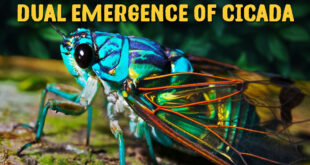Discharge of drug-containing effluents can cause drug resistance
By studying nine different pharmaceutical active compounds in Yamuna river, researchers have now pointed out that it can “possibly cause chronic toxicity” to aquatic life and to humans who use this water for drinking purposes. As our body does not use the entire quantity of the drug we take, most of it is excreted and end up in aquatic systems via domestic sewage. The report published in Ecotoxicology and Environmental Safety looks at the occurrence, fate and ecological risks of these compounds. The researchers from IIT-Delhi and National Mission for Clean Ganga collected water samples from six sites across the 25 km river stretch during three different seasons (November 2010, April and July 2011). Using different extraction processes, the pharmaceutical residues in the water were recovered and analysed. The team looked at six over-the-counter drugs (aspirin, paracetamol, ibuprofen, ranitidine, caffeine, diclofenac) and three prescription drugs (carbamazepine, codeine, diazepam). The highest concentration of pharmaceutical compounds was located downstream Wazirabad at the point where Najafgarh drain joins the Yamuna. This is one of the largest drains of Delhi and has an average discharge of about 25 cubic metres per second. The report notes that this drain is the largest polluter of the river contributing more than 50%of the total discharge into the Yamuna. Caffeine was found in high concentration in most of the sites. Caffeine is used as a stimulant in medicine; residue from beverages and other food products may be a contributor. Even prescription drugs such as carbamazepine were found in the samples with the highest level at 1.35 microgram per litre. After studying the hazard quotient, the researchers say that though the individual levels were small and cannot cause acute toxicity to the marine life, the mixture of compounds can cause chronic toxicity. “We need more studies on the pharmaceutical residues as this is found to be an emerging problem in many countries. This not only affects the biodiversity of the river but can also lead to the rise of superbugs. Uncontrolled discharge of drug-containing effluents in our rivers and other water bodies can potentially make many microbes drug-resistant,” says Prof. Atul Mittal, one of the authors of the study. “Our sewage treatment plants are not designed to take care of these pharmaceutical compounds. Also, we have no guidelines or specific rules in place about this. We need to sensitize the government and this report is the first step toward it.”
 Chinmaya IAS Academy – Current Affairs Chinmaya IAS Academy – Current Affairs
Chinmaya IAS Academy – Current Affairs Chinmaya IAS Academy – Current Affairs



